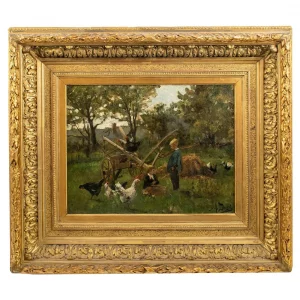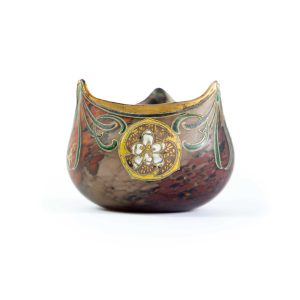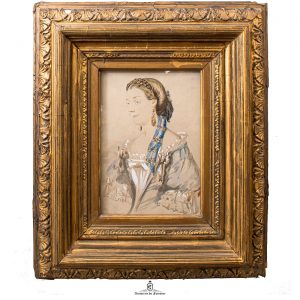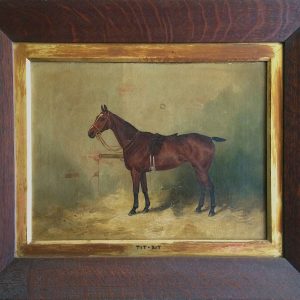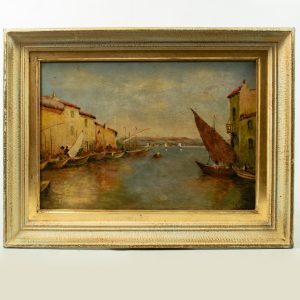19th Century “Composition with shrimps and eggs” Oil on canvas board, signed lower left L. DUPUIS Canvas size: 29 x 40 cm. Framed in a plain fruit wood frame contemporaneous with the painting. This is an extraordinary and exquisite painting demonstrating a immense talent in the interpretation of colour, light and texture. It is one of my favourite pieces and I never tire of looking at it. The canvas board is in good condition with only a few tiny spots across the top where the canvas is lifting. There are areas of wear around the edge of the canvas board. History of Louis Dupuis (1842–1921) Louis Dupuis was a Belgian artist primarily known for his still-life paintings, landscapes, and some sculpture. He was active in the 19th and early 20th centuries, a period that saw a flourishing of still-life and genre painting in Europe, especially in France and Belgium. Dupuis was highly skilled in capturing the fine details of everyday objects, often using oil paints to create rich, textured surfaces. His works are characterised by a deep understanding of light, colour, and texture, especially in still-life depictions of objects like fruits, vegetables, copperware, and seafood. Many of his paintings also showcase his ability to handle the contrasts between the gleam of metal objects and the soft surfaces of organic items . Dupuis was part of a broader tradition of still-life painters who emerged during the 19th century, such as Jean-Baptiste-Siméon Chardin and Félix Vallotton. He was part of the movement that embraced realism and attention to minute detail. His use of texture, particularly in the rendering of fabrics and objects, was highly regarded, contributing to his reputation in Belgium and France. Like many artists of his time, Dupuis exhibited his works at various salons and galleries throughout Belgium and France, where he gained recognition for his contributions to the still-life genre. His works have been part of exhibitions in Brussels and Paris, cities that were central to the development of still-life art during the 19th century.
